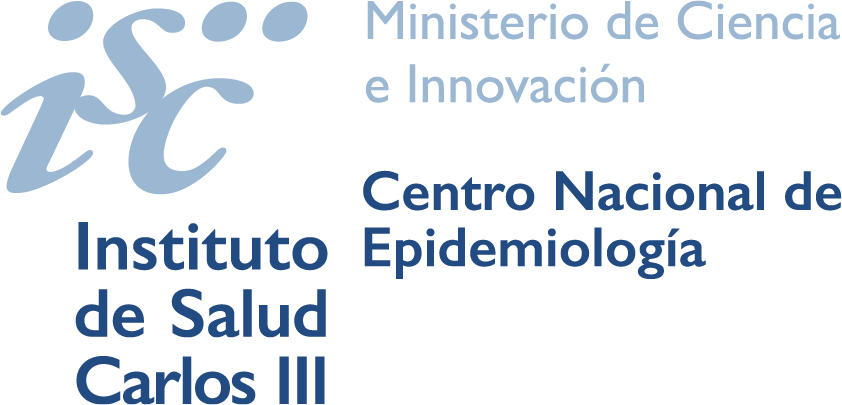Invasive Meningococcal Disease. 2021-2022 season
DOI:
https://doi.org/10.4321/s2173-92772023000200001Keywords:
Invasive meningococcal disease, IMD, Neisseria meningitidis, Spain, Epidemiological analysis, 2021/22 SeasonAbstract
Introduction: The National Epidemiological Surveillance Network (RENAVE) has among its functions the systematic collection of epidemiological information, its analysis and interpretation, and the dissemination of the results. This report shows the information on invasive meningococcal disease related to the 2021/22 epidemiological season.
Method: Descriptive epidemiological analysis of cases of IMD reported to the National Epidemiological Surveillance Network, season 2021/22. The variables analysed were: sex, age, date of symptom onset, place of residence, death and serogroup of the pathogenic agent.
Results: There were 108 confirmed cases of IMD (incidence rate of 0.23), 54.6% were males. The highest TI was observed in children under 1 year of age, with a TI of 5.16. Serogroup B produced the greatest increase in cases with respect to the previous season and was the most frequently isolated (48.1% of the cases). The number of cases reported for serogroups W, Y and C was low. The percentage of cases with ungroupable and unknown serogroups was 34.3% respectively.
Conclusions: During the 2021/22 season, confirmed cases increased by 66% compared to the previous season, but the number of cases reported was 72.6% lower than in pre-pandemic seasons. A high percentage of cases have been reported for ungroupable and unknown serogroups. It is important to have complete microbiological characterization data for surveillance.
Downloads
References
Mikucki, A., McCluskey, N.R. & Kahler, C.M. 2022, “The Host-Pathogen Interactions and Epicellular Lifestyle of Neisseria meningitidis”, Frontiers in Cellular and Infection Microbiology, vol. 12, pp. 862935.
Voss, S.S., Nielsen, J. & Valentiner-Branth, P. 2022, “Risk of sequelae after invasive meningococcal disease”, BMC infectious diseases, vol. 22, no. 1, pp. 148.
Olbrich KJ, Müller D, Schumacher S, Beck E, Meszaros K, Koerber F. Systematic Review of Invasive Meningococcal Disease: Sequelae and Quality of Life Impact on Patients and Their Caregivers. Infect Dis Ther. 2018;7(4):421-438. doi:10.1007/s40121-018-0213-2
Gruhn, S., Witte, J., Greiner, W., Damm, O., Dietzsch, M., Kramer, R. & Knuf, M. 2022, “Epidemiology and economic burden of meningococcal disease in Germany: A systematic review”, Vaccine, vol. 40, no. 13, pp. 1932-1947.
Soler Soneira, M., Carmona Alférez, M.d.R. & Cano Portero, R. 2022, Enfermedad meningocócica. Temporadas 2018-2019, 2019-2020. Disponible en: [https://revista.isciii.es/index.php/bes/article/view/1179]
Centro Nacional de Epidemiología, Instituto de Salud Carlos III 2015, Protocolo de vigilancia de la enfermedad meningocócica invasiva, Madrid. Disponible en: https://www.isciii.es/QueHacemos/Servicios/VigilanciaSaludPublicaRENAVE/EnfermedadesTransmisibles/Documents/archivos%20A-Z/Enfer_Meningoc%C3%B3cica/Protocolo%20de%20Vigilancia%20de%20Enfermedad%20Meningoc%C3%B3cica.pdf [consultado 3 de mayo de 2023]
Irlanda 2021-2022. Health Protection Surveillance Centre. Disponible en : https://www.hpsc.ie/a-z/vaccinepreventable/invasivemeningococcaldisease/ [consultado 3 de mayo de 2023]
Suecia 2021-2022. Public Health Agency of Sweden. Disponible en: https://www.folkhalsomyndigheten.se/folkhalsorapportering-statistik/statistikao/sjukdomsstatistik/meningokockinfektion-invasiv/#statistics-nav [consultado 3 de mayo de 2023]
Inglaterra 2021-2022. UK Health Security Agency. Disponible en: https://www.gov.uk/government/publications/meningococcal-disease-laboratory-confirmed-cases-in-england-in-2021-to-2022/invasive-meningococcal-disease-in-england-annual-laboratory-confirmed-reports-for-epidemiological-year-2021-to-2022 [consultado 3 de mayo de 2023]
Suiza 2021-2022. Bundesamt für Gesundheit. Meningokokken: invasive Erkrankung.BAG Disponible en: https://www.bag.admin.ch/bag/de/home/zahlen-und-statistiken/zahlen-zu-infektionskrankheiten.exturl.html/aHR0cHM6Ly9tZWxkZXN5c3RlbWUuYmFnYXBwcy5jaC9pbmZyZX/BvcnRpbmcvZGF0ZW5kZXRhaWxzL2QvbWVuaW5nb2tva2tlbi5o/dG1sP3dlYmdyYWI9aWdub3Jl.html [consultado 3 de mayo de 2023]
Francia 2017-2018 a 2022-2023. Santé Publique France. Disponible en: https://www.santepubliquefrance.fr/maladies-et-traumatismes/maladies-a-prevention-vaccinale/infections-invasives-a-meningocoque/documents/bulletin-national2/situation-epidemiologique-des-infections-invasives-a-meningocoque-en-france.-point-au-31-decembre-2022 [consultado 8 de mayo de 2023]
European Centre for Disease Prevention and Control. Weekly Communicable Disease Threats Report, week 39, Week 40, 2 - 8 October 2022. Disponible en : https://www.ecdc.europa.eu/sites/default/files/documents/Communicable-disease-threats-report-7-october-2022.pdf [consultado 8 de mayo de 2023]
Public Health England. Recent increase in group B meningococcal disease among teenagers and young adults.2022. Disponible en: https://www.gov.uk/government/news/recent-increase-in-group-b-meningococcal-disease-among-teenagers-and-young-adults [consultado 3 de mayo de 2023]
Clark E, Campbell H, Mensah AA et al. An Increase in Group B Invasive Meningococcal Disease Among Adolescents and Young Adults in England Following Easing of COVID-19 Containment Measures (December 16, 2021). Disponible en: https://ssrn.com/abstract=3998164 or http://dx.doi.org/10.2139/ssrn.3998164. [consultado 3 de mayo de 2023]
European Centre for Disease Prevention and Control. Weekly Communicable Disease Threats Report, Week 50, 11 - 17 December 2022
Ministerio de Sanidad. Coberturas de vacunación SIVAMIN. Disponible en: https://pestadistico.inteligenciadegestion.sanidad.gob.es/publicoSNS/I/sivamin/sivamin [consultado 8 de mayo de 2023]
The National Immunisation Programme in the Netherlands. Surveillance and developments in 2021-2022. Disponible en: [https://www.rivm.nl/bibliotheek/rapporten/2022-0042.pdf].
Campbell H, Andrews N, Parikh SR, et al. Impact of an adolescent meningococcal ACWY immunisation programme to control a national outbreak of group W meningococcal disease in England: a national surveillance and modelling study. Lancet Child Adolesc Health. 2022;6(2):96-105. doi:10.1016/S2352-4642(21)00335-7
Stinson C, Burman C, Presa J, Abalos M. Atypical presentation of invasive meningococcal disease caused by serogroup W meningococci. Epidemiol Infect. 2020;148:e12. Published 2020 Jan 27. doi:10.1017/S0950268819002152
Downloads
Published
How to Cite
Issue
Section
License
Copyright (c) 2023 Marta Soler Soneira

This work is licensed under a Creative Commons Attribution-NonCommercial-ShareAlike 4.0 International License.
El material creado por un autor puede ser distribuido, copiado y exhibido por terceros si se hace referencia a la autoría. No se puede obtener ningún beneficio comercial y las obras derivadas tienen que estar bajo los mismos términos de licencia que el trabajo original


